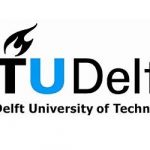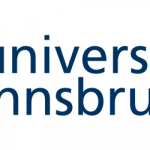IQT San Diego recap: Don’t sleep on QKD amid PQC buzz

The quantum technology world has been talking a lot about post-quantum cryptography (PQC) in recent months, but industry experts who spoke at the recent IQT Quantum Enterprise event in San Diego want to make sure you don’t forget about quantum key distribution (QKD).
In fact, while the quantum sector has been in limbo waiting for PQC standards to be announced by the National Institute of Standards and Technology, QKD projects have been advancing rather quickly.
Toshiba CEO Taro Shimada, speaking in San Diego, talked about his company’s role in a large QKD proof-of-concept (PoC) project with banking giant JPMorgan Chase, as well as QKD network rollouts with telecom network operators like BT in the U.K. and KT in South Korea, and with the Chicago Quantum Exchange. The project with KT, involving QKD hubs in the Korean cities of Seoul and Daejeon, will be a testbed for QKD as-a-service (QKDaaS), and will be operational this summer.
“Billions of dollars have been spent in R&D and to do trials of QKD technology systems and networks globally in the past couple of decades,” Shimada said. “Toshiba on its own has spent tens of millions in R&D on this technology to date.”
Toshiba’s CEO shared his virtual conference stage with Marco Pistoia, who has a title befitting of his legendary status on the sector – Managing Director, Distinguished Engineer, Head of Research and Engineering, Head of Quantum Technology at JPMorgan Chase & Co. Regarding the QKD efforts involving his company and Toshiba, which also involved networking technology vendor Ciena, Pistoia said, “We’re talking about the first mission network capable of supporting mission critical applications in metropolitan areas.”
He described six experiments that JPMorgan and Toshiba conducted at JPMorgan Chase lab in Columbus, Ohio. “The first four tests were to discover if the quality of our QKD was high enough to sustain high data traffic,” Pistoia explained, “We tested the interoperability between the Toshiba antenna and the network infrastructure. In a test of distance, we were able to achieve distance of 100 kilometers, which is sufficient for metropolitan areas.”
He added, “We were able to multiplex in a single fiber channel for the key exchange, and we actually were able to exchange 258 keys per second along with the 800 gigabit-per-second Secure Data Channel, and along with other data, altogether achieving a capacity of 2.4 terabits per second. These are very important results because since everything happens on the same fiber, we prove that it’s not necessary to create a separate fiber channel just to transmit the key, for example, so there is no additional cost for using quantum key distribution.”
The group also tested eavesdropper detection, and in the sixth test demonstrated securing of blockchain applications requiring confidentiality. Of that sixth test, he said, “We were able to prove that this actually works with a JP Morgan Chase application for payments, so it’s a real world application. We secured the confidentiality. We also want to do work around the verification of digital signatures. That will be part of future work.”
ID Quantique is another party that has been engaged with organizations testing QKD, including SK Telecom in Korea, which is building a 30-node QKD network, and the European Commission’s EuroQCI project, which also has grand ambitions. Meanwhile, Qubitekk has worked with fiber network provider EPB on QKD demonstrations, as well as the Air Force.
As QKD matures and advances beyond small-scope trials and PoCs, and companies are able to augment the distance of the transmissions through the use of repeaters, it could start to overcome the perception that it is competitive with PQC efforts, and somehow a lesser alternative for quantum-safe security.
“Our view is that these two technologies are actually very complementary,” said Gregoire Ribordy, founder and CEO of ID Quantique. “QKD can be used in the information backbone network, with PQC at the edge of the network, and in endpoint devices.”
John Prisco, President and CEO of Safe Quantum, and a frequent speaker at IQT events, concurred, saying, “I’m focused on additional QKD use cases that include securing data in motion to the cloud and the FinTech vertical as well, and it’s interesting that there’s this competition. It’s more of a cooperation between PQC and QkD. I think both certainly are very important, and I think you’ll see that there are applications where both work very well together. There are some applications where one has an advantage over the other, but generally speaking both technologies are going to be critically important going forward.”
Prisco thinks that in addition to ongoing PoCs and trials, one thing that will help the advancement of QKD is the shrinking of the technology and its integration at the chip level. “That will drive the cost down,” he said. “There’s no question about that, and it will help QKD proliferate to a lot more of the market. I think the golden years of QKD are ahead of us.”
Dan O’Shea has covered telecommunications and related topics including semiconductors, sensors, retail systems, digital payments and quantum computing/technology for over 25 years.



















